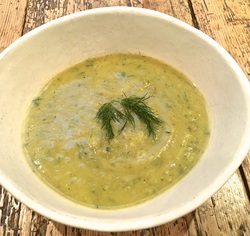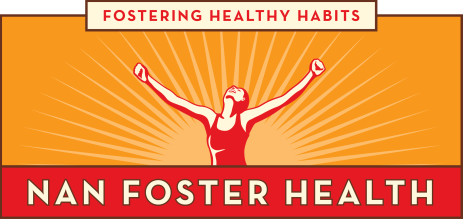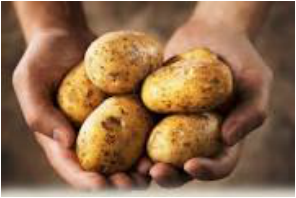Since you've been keeping up with the latest in nutrition, you know that the healthiest, most nutrient-dense carbohydrates are the complex kind from veggies and whole grains. Well, I'm happy to tell you there's evidence to support that some of our starchiest faves can now be welcomed back to your dinner plate with open arms and open mouth. I'm not talking about any old starch...not the refined carbs of baked cookies, cakes, breads, or bagels that cause blood sugar and insulin to rise. No, I'm talking about carbs that contain resistant starch.
Found in many carbohydrate-rich foods including potatoes, bananas, grains, and beans, "resistant" starch is so-called because our digestive system resists absorbing this type of dietary fiber. Since you can't digest or absorb it, it doesn't enter the bloodstream or get stored as body fat like most starchy carbs do. While the benefits of this type of fiber are plentiful (see below), there is a catch. These foods need to be cooled either to room temperature or in the fridge causing the starch to crystalize into the form that resists digestion. Some examples include cold rice salad, potato salad, and cooked and cooled legumes. The average American woman consumes about 4 g of resistant starch each day; now researchers recommend doubling that by adding 1/2 to 1 cup of resistant starch foods per day. Twist my arm, right?
Here's why. Resistant starch:
- boosts the body's fat-burning ability*
- fills you up
- reduces hunger by increasing satiety hormone
- improves blood sugar and insulin control
- boosts immunity by increasing good gut bacteria for a healthy microbiome
- may reduce your risk of diabetes and heart disease
- may reduce your risk of colon cancer
Here's how to get more resistant starch into your diet:
FOOD RESISTANT STARCH
Beans 8 g per 1/2 cup
Bananas (still green) 6 g per small banana
Potatoes and Yams 4 g per 1/2 cup
Barley (not a gluten free grain) 3 g per 1/2 cup
Brown Rice 2 g per 1/2 cup
Corn 2 g per 1/2 cup

Zucchini Dill Vichyssoise
Organic ingredients are best to maximize nutrients and minimize toxins.
Print Recipe
Serves 6-8
1 T ghee (or butter)
1 T olive oil
5 c leeks, white and light green part chopped
4 c Yukon Gold potatoes, unpeeled and chopped
2 zucchini, unpeeled and chopped
6 c chicken or vegetable stock
1 t salt
1/2 t pepper
2 T almond milk, homemade (see recipe below) or store-bought
1/4 c fresh dill, chopped
Heat the butter and oil in a large soup pot, add the leeks, and saute over medium-low heat for 5 minutes. Add the potatoes, zucchini, chicken stock, salt, and pepper; bring to a boil; then lower heat to low and simmer for 30 minutes, covered. Use an immersion blender to puree soup in pot until creamy, or ladle into food processor and process in batches. Stir in the almond milk and dill and season to taste. Allow to cool. Refrigerate for two hours or more. Serve cold and garnish with dill.
Almond Milk
To make almond milk yourself, you will need a nut milk bag which can be purchased at health food stores and online at Amazon.com.
1 c raw almonds (or pecans, cashews, walnuts)
4 c water
1 t vanilla extract, optional (omit for unflavored almond
milk)
Place all ingredients in a high-powered blender and blend on high
speed until very well combined and white. Pour liquid into nut milk
bag held over a large bowl or wide-mouth pitcher. Close bag and
squeeze slowly until all liquid has been extracted. Keep refrigerated;
will last 3-4 days.
Nutritious Gluten-Free, Dairy-Free Recipes | © 2016 Nan Foster Health, all rights reserved.

